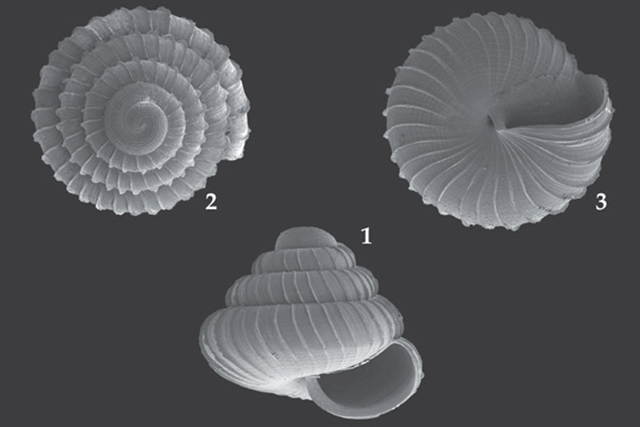 Scientists once dreamed to give their own name to newly discovered species. This time however, scientists honor of the name is no reason of pride: a team of scientists have discovered a new snail specie on a limestone hill near a cement quarry in Malaysia, which as far as they know lives nowhere else in the world.The scientists who discovered the animal named it Charopa lafargei, after the cement company that will decide its fate.
Scientists once dreamed to give their own name to newly discovered species. This time however, scientists honor of the name is no reason of pride: a team of scientists have discovered a new snail specie on a limestone hill near a cement quarry in Malaysia, which as far as they know lives nowhere else in the world.The scientists who discovered the animal named it Charopa lafargei, after the cement company that will decide its fate.
Although just unearthed, the miniscule snail is already threatened with extinction. It lives on a limestone hill called Kanthan given as a concession to an international company Lafarge. The cement producer quarries the hill for raw materials. As a result, the snail will be included as Critically Endangered in the next update of the IUCN Red List for Endangered Species.
Un tempo il sogno degli scienziati era dare il proprio nome a una nova specie appena scoperta. Questa volta però l’onore del nome non è una cosa di cui vantarsi. Un team di scienziati ha infatti individuato una nuova specie di lumaca su una collina calcarea nei pressi di una cava di cemento in Malesia. La piccola lumaca, pare, vive esclusivamente su questa collina.
"Narrow endemic species are a common occurrence on limestone hills," Jaap Vermeulen, lead author of the new study, told mongabay.com. "A good biologist can quite easily discover several species of endemic invertebrates on an isolated, unsurveyed hill."
"I'm not aware of a species threatened with extinction which has been given the name of the company which can determine whether it goes extinct or survives," said Tony Whitten from Fauna & Flora International.
The new snail is not the only endemic species found on the hill. Kanthan is also home to nine plant species that are on Malaysia's Red List of Endangered Plants, one Critically Endangered spider (Liphistius kanthan), one gecko (Cyrtodactylus guakanthanensis) and two snails (Opisthostoma trapezium and Sinoennea chrysalis) that are found nowhere else in the world.


